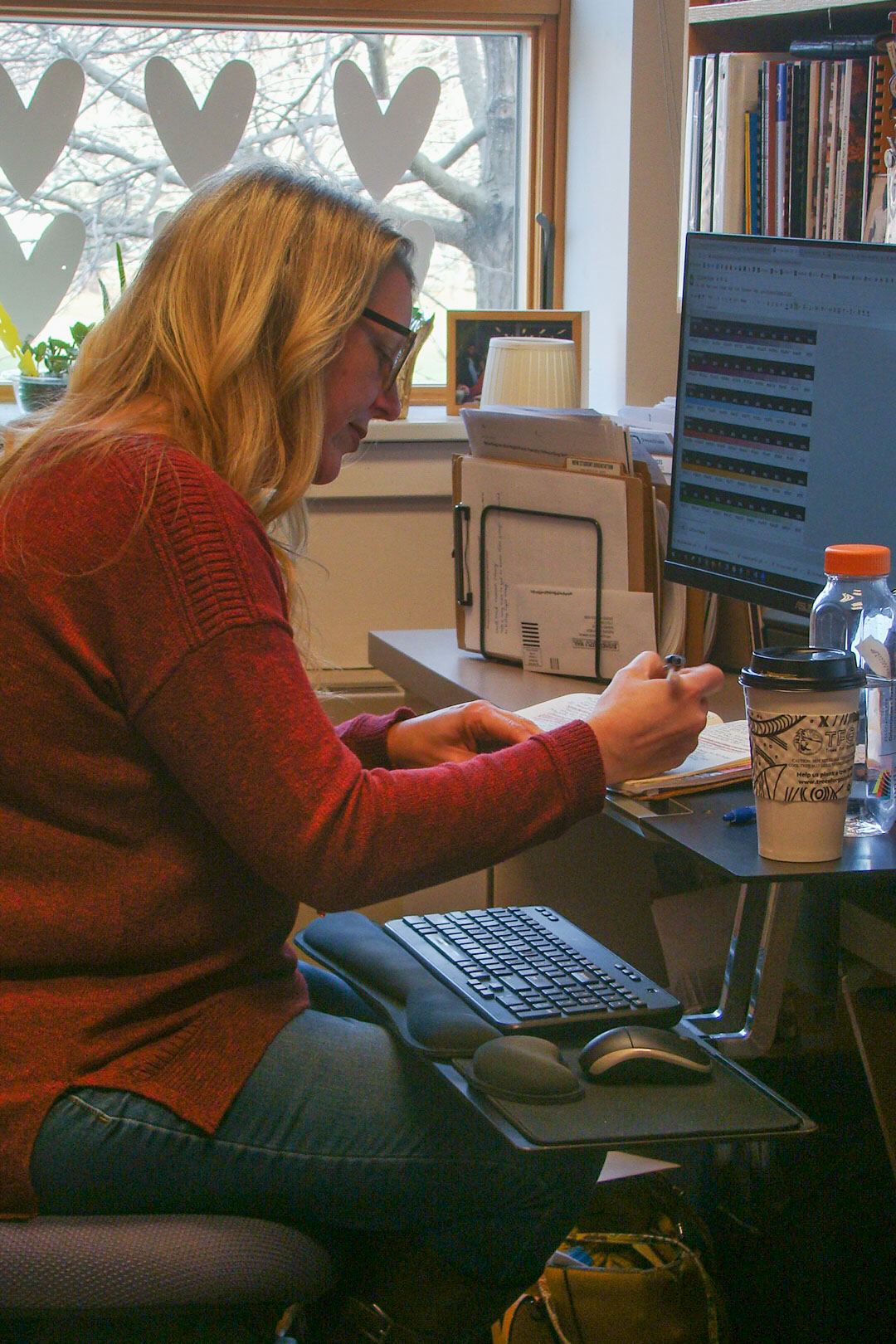By the time orientation week wraps up every year and classes get underway, there’s one person that every freshman on campus knows: Adela Hufford.
Hufford is Goshen College’s director of orientation, transition and retention. She works in a wide variety of roles — and she’s held just as many positions at GC — but the one she’s most widely known for is the biggest part of her job: orientation.“Being a part of orientation didn’t happen for me until I was at the tail end of admissions and enrollment,” Hufford said. “It intrigued me. I love event planning and I enjoy trying to figure out what I want people to feel.”
Before orientation, Hufford worked in a variety of positions in admissions — she’s been at GC since 2012 — including spending two years as dean of admissions. But she said she got curious about how retention worked.
“While you’re in admissions,” she said, “it’s really easy to say ‘I worked so hard to bring this class in. Don’t screw it up.’ So I was curious to know: what happens after [new students] check in? What’s next?”
So she asked to get involved with retention.
“I kind of just said ‘I’d like to be a part of planning this,’” she said. “I was part of a larger group that planned this for my last two years in admissions, and then I had the opportunity to transition [roles].”
After spending a few years in different positions, straddling admissions, orientation and retention, Hufford settled into the job she currently holds.
“I’ve had a very interesting career at Goshen College,” she chuckled. “This is the longest I’ve ever held the same title, job description [and] supervisor and I’m only in my third year! … I’m a product of the liberal arts.”
In her current role, she leads retention efforts and transitioning students in and out of Goshen. In her words, she “wear[s] a lot of hats.” But orientation is the crown jewel.
As the sole director of the week-long program for new students, Hufford has to decide how best to welcome students to college. She believes that orientation is “about creating a space for students to feel, ‘OK, I could be here. I belong here.’” And she has drastically changed what that space looks like since she started running orientation.
Seniors remember their orientation experience as just one weekend — packed full of lectures and presentations. For juniors … well, it was also just one weekend, but juniors had orientation in 2020 so that year doesn’t count for anything. Full stop.
“I am so, so sorry to all of you that had to start college in 2020,” Hufford said.
But starting in the fall of 2021, she had the opportunity to turn something she’d been dreaming of for a while into reality: a full week of orientation.
“Prior to fall ‘20, I started to look at other schools that were doing a week-long [orientation],” she said. “Corie [Steinke, then-director of student involvement] and I started to dream … What would it be like to spend a whole week on campus and not be taking classes?”
So she instituted a week-long extended orientation. In its first run in the fall of 2021, the week was a success. Nevertheless, she said her next step was asking the question, “How do we make it better?”
Hufford said that she thought that orientation was too academically focused in 2021, and that while that improved somewhat in 2022, she wanted to institute “more time to get to know [the] class and social development … it’s not about major, sweeping changes now. It’s about refining.”
She collected extensive feedback after this past fall, both from exit surveys and discussions with student groups.
“I want to continuously change things to make orientation better, and I’m open to suggestions,” she said. “I can think one way, but if students think another way, I need students at the table.”
She also gains insight from discussions with students transferring out of GC. Before students leave, she sits down with them and has a frank discussion about what didn’t work at GC.
Although those are never easy discussions, Hufford says that they are usually healthy and helpful. “I hear their stories,” she said, “and I hold their stories, and that influences the work of thinking about orientation.”
Hufford is already working hard at planning and organizing next year’s orientation. With a host of ideas for what to add — pep rallies, affinity groups and tailgating being a few — she says that she’s “excited.”
“We really want to create opportunities and space for all these identities that students are bringing to campus. And I’m really excited! I think there’s more support to do that this year.”




